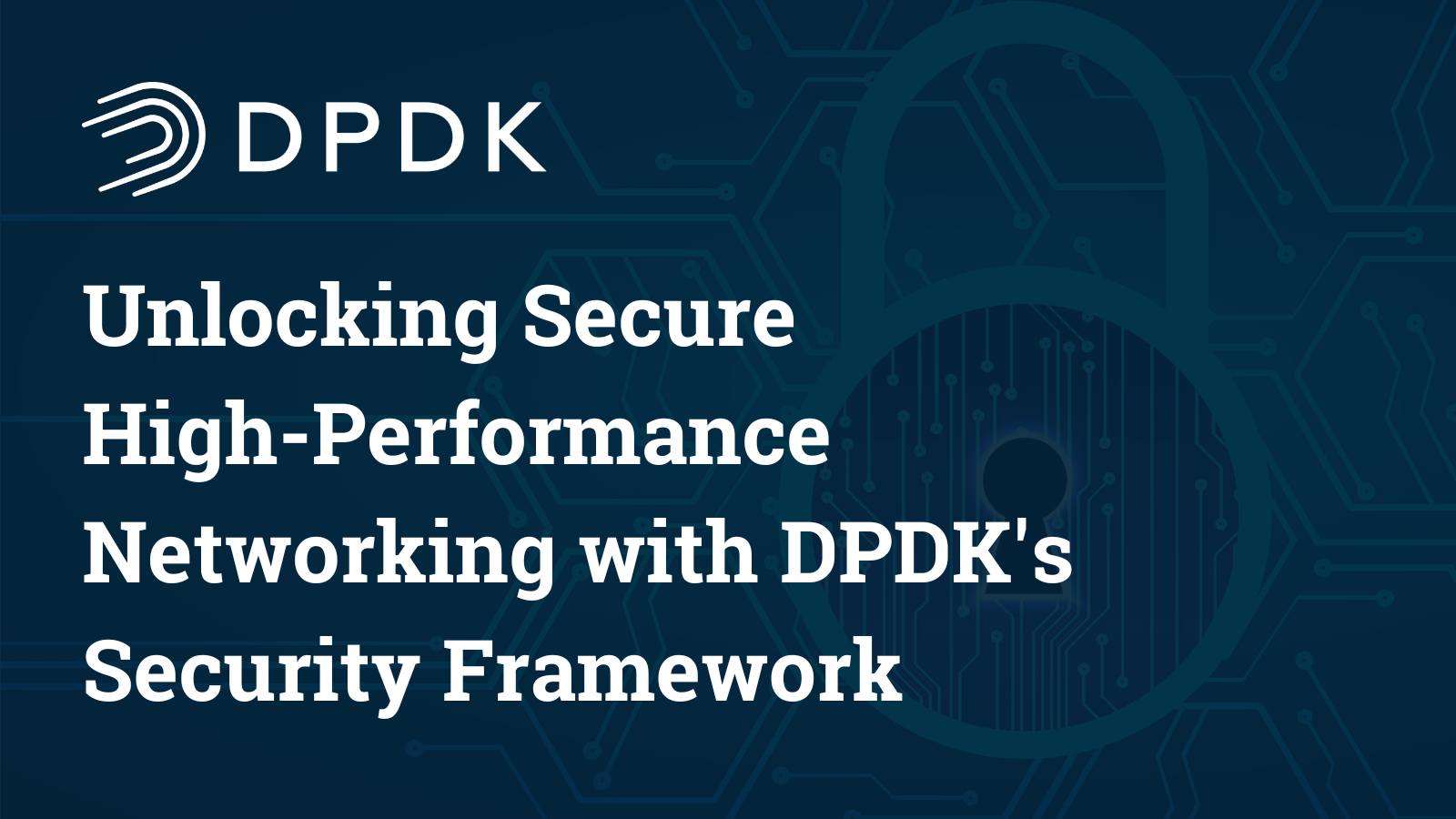
The DPDK project is key to rapidly developing high-speed data packet networking applications and stands as a leading open-source project that has strategically developed a robust security framework through open development and open governance, setting a standard in high-performance networking.
This framework is crucial not just as an added feature but as a core requirement, enhancing the security of packet processing across a wide range of environments, from data centers to network edges, and from infrastructure to experimental applications globally.
The lack of such a framework could escalate risks like data breaches and denial of service attacks, threatening both system integrity and compliance. However, DPDK’s ongoing commitment to developing this framework and security measures not only safeguard data and optimize system performance but also build trust and ensure compliance, fostering innovation and expanding its adoption in regulated and sensitive environments.
The DPDK community relies on the collaborative efforts of its members to enhance and maintain its security framework, a critical component given the high-performance networking demands it supports. Contributors from around the world actively participate in discussions, patch reviews, and the development of new features through open governance structures.
This collective engagement ensures that the DPDK remains at the forefront of network technology by incorporating the latest security protocols and responding swiftly to emerging vulnerabilities. Community involvement is crucial not only for the development of robust security measures but also for fostering an ecosystem where knowledge and best practices are shared openly, enhancing the reliability and security of the applications powered by DPDK.
This document outlines the security protocols and implementations supported within DPDK, serving as a guide for both users and contributors. It provides:
- For Users: An in-depth understanding of DPDK’s security capabilities and practical guidance for implementation in real-world applications.
- For Contributors: An overview of existing implementations, identification of areas for improvement, and opportunities to extend the framework, ensuring DPDK evolves to meet emerging security requirements.
The Imperative of Security in High-Performance Networking
High-performance networks handle vast amounts of data at extremely low latencies. However, integrating security measures in such environments presents unique challenges:
- Encryption Overhead: Implementing cryptographic operations impacts system throughput and latency.
- Key Management: Efficient cryptographic key management is crucial but complex, especially across distributed systems.
- Secure Environment Setup: Configuring hardware and software to thwart unauthorized access is critical but demands meticulous effort.
- Expanding Threat Landscape: High-speed networks face increased risks from data breaches and attacks due to their complexity and broader attack surfaces.
A Closer Look at DPDK’s Security Features
DPDK enhances high-performance network security through a blend of hardware and software solutions:
- Hardware-Level Security: Utilizing features like Secure Memory Encryption and Trusted Execution Environments helps isolate and protect sensitive operations.
- Software-Level Security: DPDK provides extensive support for security protocols and cryptographic operations, ensuring secure data handling across networks.
Supported Protocols and Features
DPDK’s security capabilities are robust, supporting various protocols essential for modern networking:
- Transport Layer Security (TLS): Includes support for TLS 1.2 and 1.3 through hardware-accelerated cryptographic operations, although current support is primarily available on specific hardware like Marvell.
- IPSec: Facilitates secure IP communications through DPDK’s crypto-dev and security API, enhancing data integrity and confidentiality.
- MACSec: Implements Layer 2 security to encrypt and authenticate network traffic efficiently.
- WireGuard and QUIC: Although native support is limited, DPDK’s high-performance capabilities can be leveraged to optimize these protocols, enhancing VPN and low-latency communications.
Identifying Areas for Improvement
While DPDK’s Security Framework is comprehensive, there are areas needing enhancement to keep pace with evolving security demands:
- Extending TLS Support: Broadening hardware support for TLS offloading can enhance performance and encourage wider adoption. Adding TLS Handshake support would also be beneficial.
- Integrating Modern Protocols: Better support for protocols like WireGuard and QUIC can position DPDK as a more versatile tool for secure, high-throughput networking.
Opportunities for Contributors
The ongoing development of DPDK’s Security Framework offers numerous opportunities for contributors:
- Hardware Integration: Collaborating with hardware vendors to expand support for cryptographic offloading.
- Protocol Development: Enhancing support for emerging protocols, ensuring DPDK remains relevant in an ever-evolving landscape.
Contribute today!
The DPDK project is community-driven, and the security domain presents numerous opportunities for old and new contributors to make an impact.
Read the full document here: 10. Security Support — Data Plane Development Kit 25.03.0-rc0 documentation
Learn how to start contributing here: https://www.dpdk.org/contribute/

